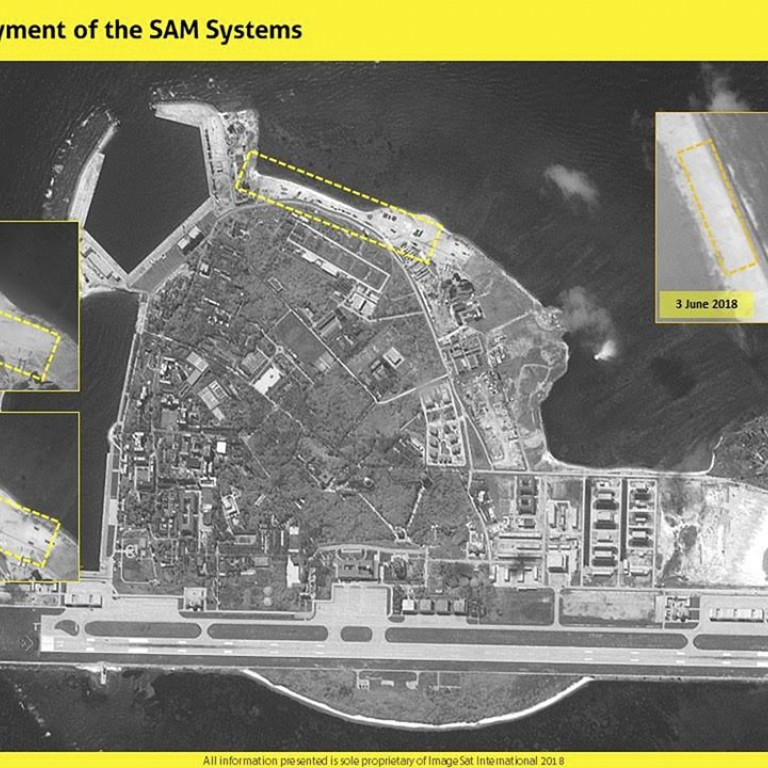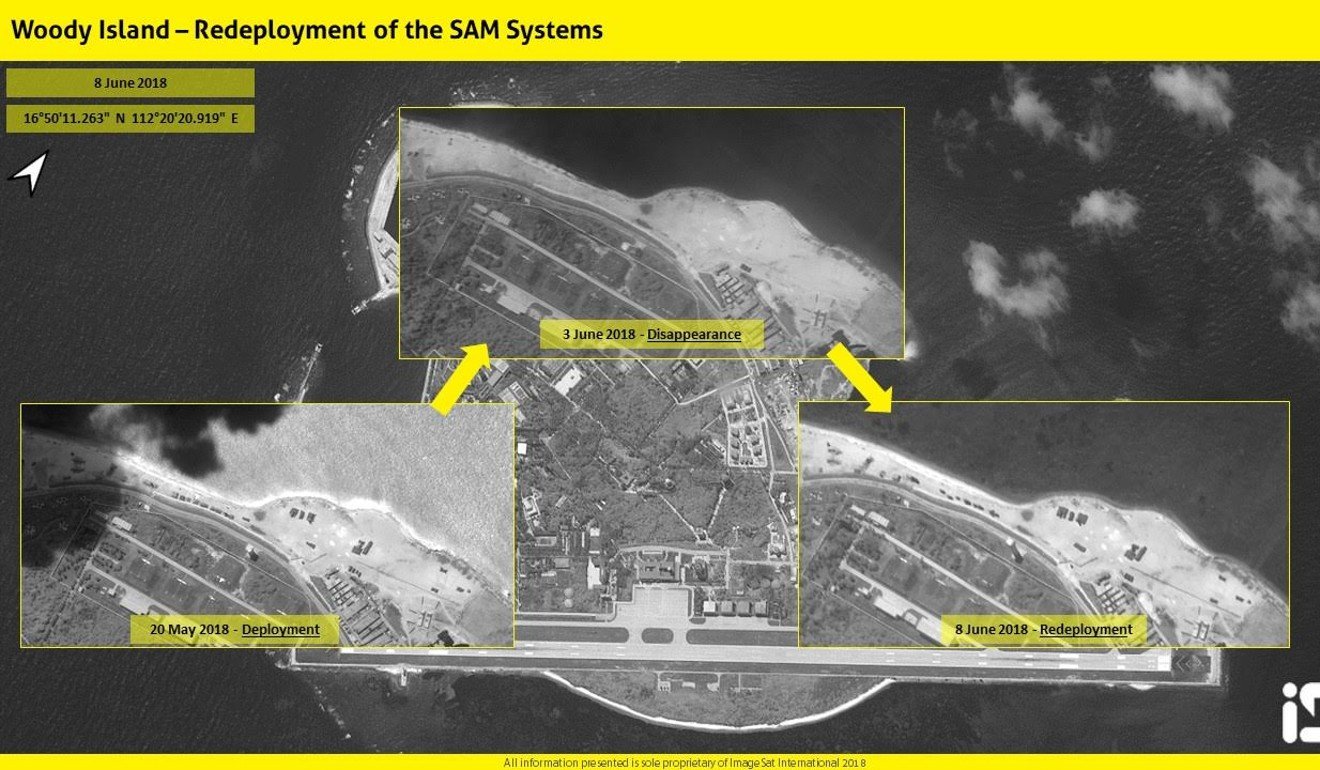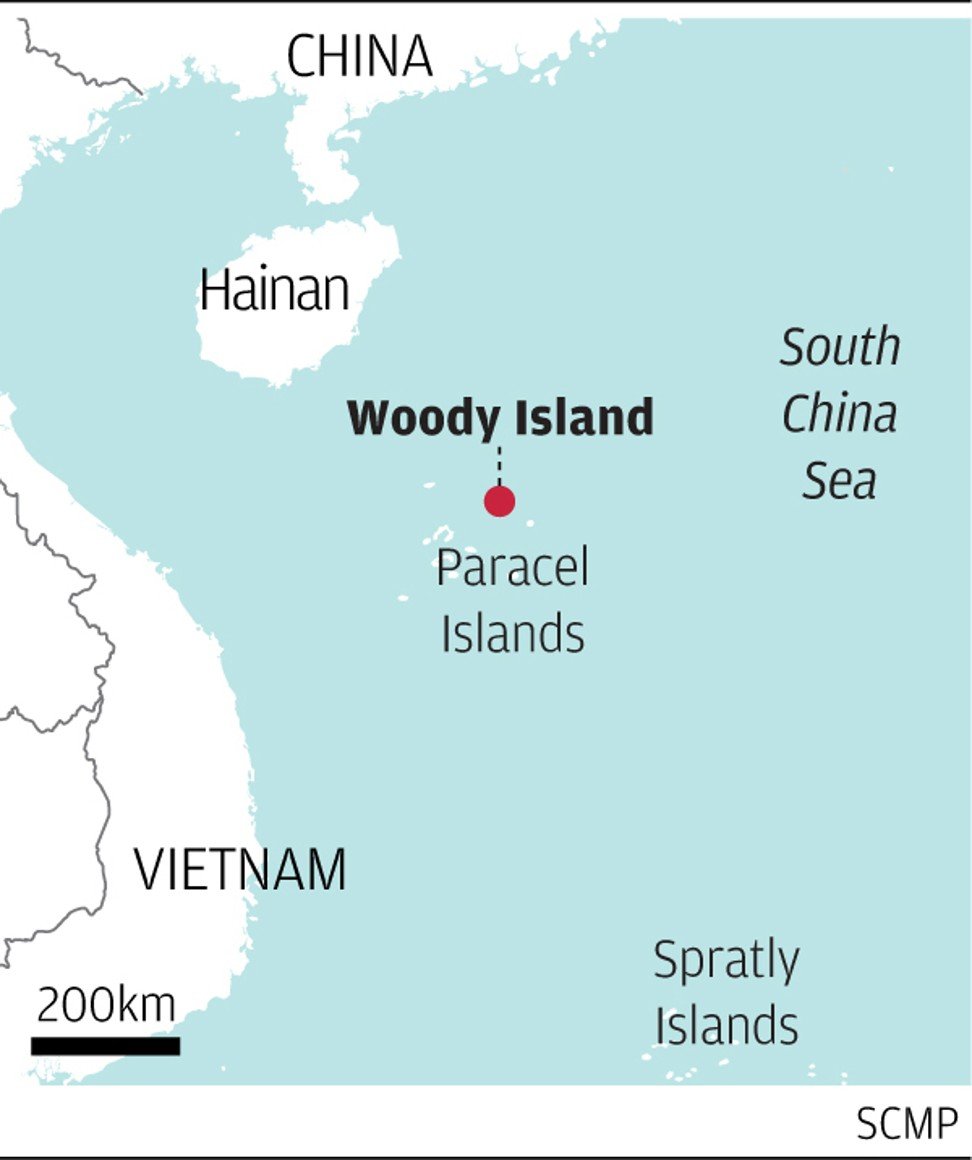
China puts missiles back on contested South China Sea island as United States pushes allies for bigger military presence in waters
Israeli intelligence firm releases satellite images backing up assessments that the removal of the weapons systems would be temporary
China has redeployed missiles it removed last week from a disputed island in the South China Sea amid rising tensions with the United States, satellite images show.
Israeli intelligence firm ImageSat International (ISI) said images taken on Friday indicated that China had returned its surface-to-air missile systems on Woody Island, known in China as Yongxing Island, in the Paracels “exactly to the positions they were”.

ISI released a series of satellite photos on June 3 that suggested the missiles, some of them identified as HQ-9s, had been removed or relocated.
China’s defence ministry did not immediately reply to a faxed request for comment.
The removal last week came as tensions between China and the US flared over the troubled waters after Washington sent two nuclear-capable B-52 bombers to fly over the disputed Spratly Islands.
Foreign ministry spokeswoman Hua Chunying on Wednesday accused the US military against “hyping up militarisation and stirring up trouble”, adding that China would do whatever was necessary to protect its sovereignty.
The “routine” fly-by mission came just days after US Defence Secretary Jim Mattis warned at a regional security summit of “consequences in the future” for China over its militarisation of artificial features in the South China Sea.
The Pentagon was reported to be considering sending warships to the Taiwan Strait and stepping up naval patrols in the dispute waterway.
The US is also trying to rally its allies, including Britain and France, to increase their military presence in the area, including navy patrols to counter those of China.
The reappearance of the missile systems confirmed ISI’s and defence analysts’ assessments that the removal was likely to be temporary.
“On the other hand, it may be a regular practice,” ISI said. “If so, within the next few days we may observe a redeployment in the same area.”
Beijing-based naval expert Li Jie said on Monday that the quick redeployment of the HQ-9 missiles could indicate that they had been removed for maintenance and repair during the typhoon season.
He said earlier it would not be the first time that Beijing had moved its missiles. The last time was in July 2016, just days before the Permanent Court of Arbitration in The Hague rejected Beijing’s claims to the South China Sea.
Colin Koh, a research fellow at the S. Rajaratnam School of International Studies in Singapore, said the satellite images could indicate that the redeployed systems belong to two distinct firing batteries of HQ-9, with one facing north and the other facing east.
He said the HQ-9 was a long-range, high-performance air defence system designed to combat enemy aircraft but with only limited use against low-flying cruise missiles.

The missiles’ temporary withdrawal might have been due to their routine maintenance and repair, he said, adding that their deployment close to the sea made their sensitive circuitry vulnerable to the elements, especially salt. Regular “downtime” was to be expected, he said.
“They might have been withdrawn to mainland bases or just to nearby, out-of-sight shelters from which they could be swiftly redeployed.
“The deployment, withdrawal and re-deployment can be easily accomplished because of the [short] distance between Woody Island and Hainan [province], and the availability of airlift to transport the systems at short notice.”
Koh said that the deployment pattern also had a “tactical” element and was a sign of China’s increasing control over the South China Sea.
“The systems can be deployed, withdrawn and re-deployed whenever politically expedient,” he said. “And they do not lend themselves easily to verification, compliance and enforcement processes that often characterise arms control.”
Whether or not Beijing wanted the deployment of the HQ-9 system to be seen, Koh said it underscored the fact that “the PLA is capable of deploying state-of-the-art weapon systems to areas of strategic interest, including the South China Sea, at any time”.


